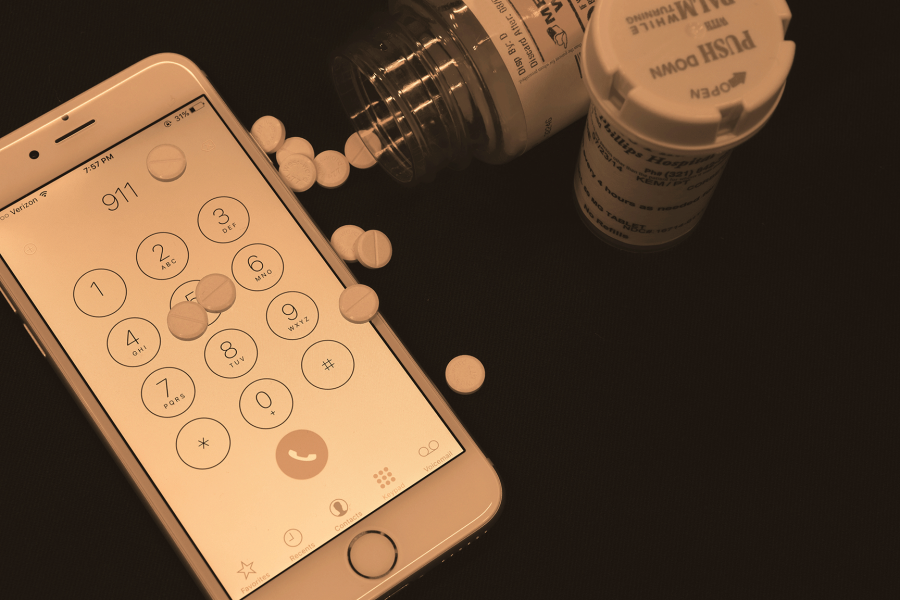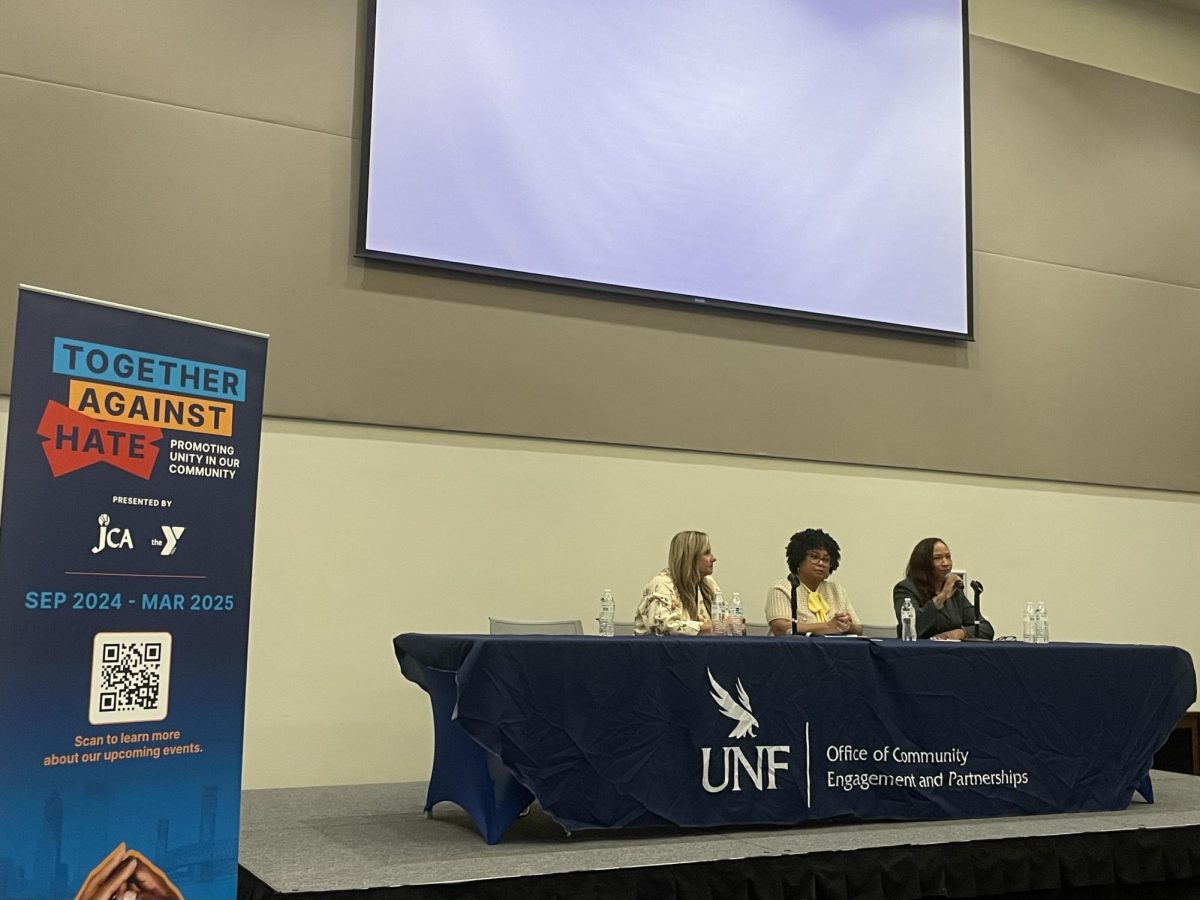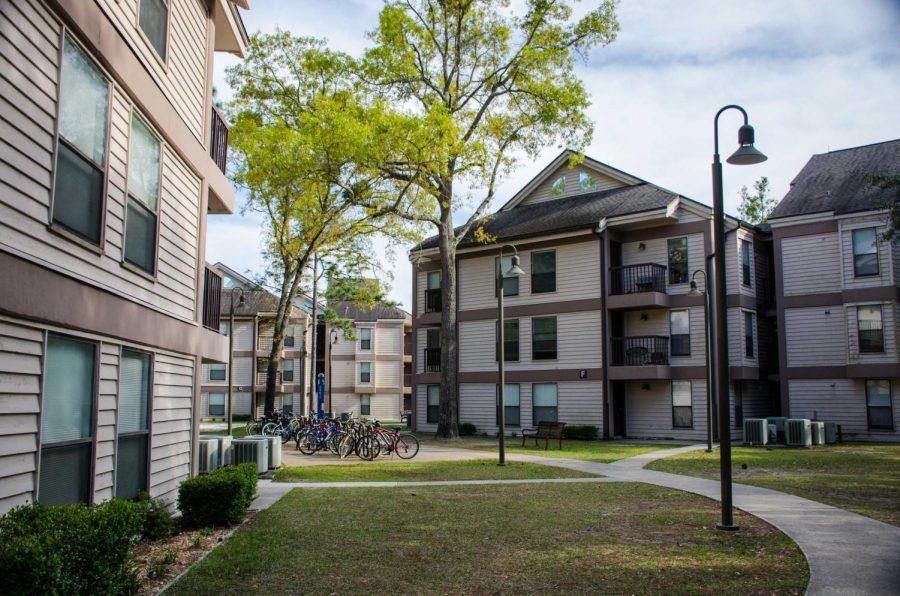Consequences linger behind the hormonally driven act of the college hook up, including a possible sexually transmitted infection (STI). Half of college students who are sexually active will be diagnosed for an STI by the age of 25, Elissa Barr, Ph.D., Associate Professor of Public Health, said. While UNF updates their students on methods of prevention, STIs still pose detrimental threats to a person’s health.
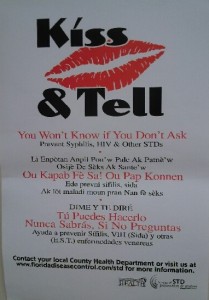
Many of these infections are symptomless and are usually discovered when the individual has been tested, said Doreen Perez, director of Student Health Services at UNF.
Based on national statistics for college age individuals and surveys taken on other college campuses, chlamydia ranks as the highest occurring STI on college campuses.
One of Student Health Services’ top initiatives is teaching preventative methods. Student Health Services wants to cut down the number of students who contract STDs.
“There’s almost 20,000,000 new cases of STDs in the United States each year, and half of these are in young people aged 15-24, which includes college-aged people,” Barr said.
Several UNF students were unaware of the high rate of risk that casual sex can impose. Megan Boyle, a biology freshman, said she was not aware of the high chances of catching an STD. She said, “I think college students need to have protected sex. I think partners need to tell their partners if they have [an STD].”

Nicholaus Fiore, criminal justice freshman, said he is aware of the large presence of STIs on college campus but did not know it was that large of a number.
About 50 percent of college students will receive an STI in their lifetime, Barr said. STIs are spreading so rapidly because most people are unaware they carry the infection, which is why it is called the ‘silent epidemic’, Barr said.
“They think that a lot of time people with STDs are people who sleep around and have a lot of partners. Anybody can have an STD; just because you’re clean cut and you’ve only had two partners or one partner, that doesn’t mean that you don’t have an STD,” Barr said.
Stigmas surrounding STIs have caused myths about the infections, including the myth that one could contract an STI, like herpes or gonorrhea, from a toilet seat. Some also think STIs will go away on their own, which they don’t. They must be treated, or they can result in several health problems, Barr said.
The Center for Disease Control estimates there are 19.7 million new STI cases a year. With 319,510,848 as the estimated U.S. population in 2014, an estimated average of 6.3 percent of the U.S. population is yearly diagnosed with an STI.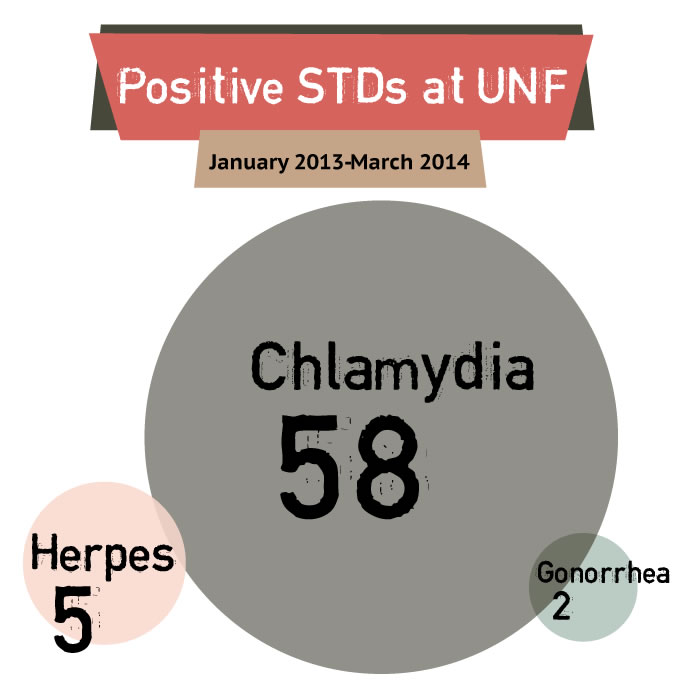
From January 2013 – March 2014, UNF’s Student Health Services has tested and determined a total of 67 positive results of STIs.
If a student approaches Student Health Services believing they have an STD, the doctors review any high risk behavior and sexual activity. They look for common symptoms, such as drainage from the penis or vaginal area, lesions, high fever, and inflammation, Perez said.
Practicing safe sex can effectively prevent the spread of STIs. Free condoms are available to students at several locations on campus, such as the waiting room in Student Health Services, the Women’s Center, and the LGBT Center.
Perez believes that it is not the numbers of positive results but the behavior of students that matters. Many students are happy about the performance of Student Health Services, but when it comes to sexual health education, their attention usually drifts to descriptive posters and free condoms.
As far as educating students on sexual health, the information students receive usually derives from what they notice during a quick visit. Benjamin Arscott, political science senior, said he has not heard anything about sexual health from Student Health Services, except for the condoms offered at the front desk and in the patient rooms. In addition to free condoms, posters inside the clinic promote sexual health by educating students on preventing STDs.
If an epidemic of a certain STI occurs in a university, the Health Department assumes control of the situation. Student Health Service centers do not notify other universities if they have confirmed multiple cases, Perez said.
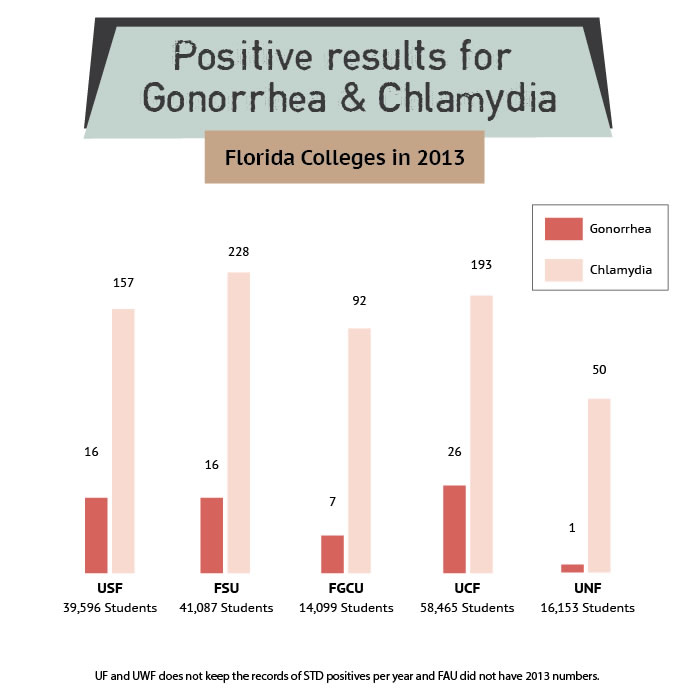 When a student is diagnosed with an STI, UNF transfers the information to the Duval County Health Department. If there have been multiple diagnosis of an STI on campus, UNF relies on the health department to notify them, Perez said.
When a student is diagnosed with an STI, UNF transfers the information to the Duval County Health Department. If there have been multiple diagnosis of an STI on campus, UNF relies on the health department to notify them, Perez said.
The data UNF sends to the health department is then compiled into a mass statistic for the entire county, Charles Griggs, director of communications and community engagement for Duval County Health Department, said.
Other universities in Florida experience similar STI concerns as UNF. Florida State University has the highest number of chlamydia cases in 2013, with 228 confirmed diagnosed cases. Leon County, where FSU is located, also has the highest number of chlamydia and gonorrhea cases in Florida, said FSU Sexual Health Educator Anna Benbrook.
Living with an STI is difficult but manageable. Going without treatment could cause serious medical issues, such as infertility, Barr said.
The trials college students face extends beyond their momentary concerns of grades, relationships, and graduation. With a fifty percent chance of catching an STI, the common sexual drive that lies within a student’s biology poses greater risks now more than ever.



